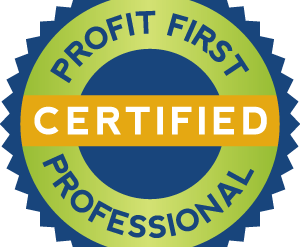Small business owners often face several financial struggles that can create significant stress and instability for their businesses. Let’s explore three common issues—cash flow challenges, unexpected tax bills, and inconsistent profits—and how the Profit First system can help overcome these challenges.
1. Cash Flow Challenges
The Struggle:
Cash flow issues are one of the biggest financial challenges for small businesses. Many owners find themselves with plenty of income on paper, but little actual cash in the bank to cover immediate expenses like payroll, rent, or inventory. Cash flow gaps can be especially common in seasonal businesses or those with long payment cycles, like contractors waiting for large payments after a project is completed.
How Profit First Helps:
Profit First addresses cash flow challenges by promoting a disciplined allocation system. When income comes in, it’s distributed across specific bank accounts with designated purposes (Profit, Tax, Owner’s Pay, and Operating Expenses), giving owners clear visibility into how much cash is available for each need. This system prevents overspending on day-to-day expenses and ensures that there’s always money set aside for key business needs. By regularly allocating funds to an Operating Expenses account, Profit First encourages business owners to live within their means and manage cash flow more effectively.
2. Unexpected Tax Bills
The Struggle:
Taxes can be a significant financial burden for small businesses, especially when tax season arrives and owners realise they haven’t set aside enough to cover their tax liabilities. This often leads to scrambling for funds, which can disrupt other financial commitments or force owners into debt.
How Profit First Helps:
With Profit First, taxes become a planned and prepared expense. Each time income is deposited, a percentage is allocated specifically to a Tax account. This way, business owners are consistently setting aside money for taxes throughout the year rather than waiting until the end. By the time tax season rolls around, the money is already in place, reducing stress and ensuring compliance without disrupting other areas of the business. This proactive approach eliminates tax-time surprises and helps business owners avoid costly penalties and interest.
3. Inconsistent Profits
The Struggle:
Many business owners find that despite high revenues, their actual profit margins are low or inconsistent. This can lead to burnout, as owners work hard without seeing the financial rewards they anticipated. The traditional approach—reinvesting everything back into the business in hopes of future profits—can leave business owners in a constant cycle of just breaking even or barely scraping by.
How Profit First Helps:
Profit First addresses this by making profit a priority from the start. Under the Profit First formula (Sales – Profit = Expenses), owners set aside a portion of income for profit before paying other expenses. This small but consistent profit allocation builds up over time, giving the business a steady foundation of profitability and breaking the cycle of “one day, we’ll be profitable.” This approach helps business owners see the rewards of their hard work, boosts morale, and enables them to take a strategic approach to growth that prioritises profitability over just increasing revenue.
Summary of How Profit First Overcomes These Financial Struggles
By promoting a clear, disciplined allocation system, Profit First helps small businesses achieve financial stability, avoid tax surprises, and ensure that profits are realised consistently. Instead of waiting for profit to emerge from what’s left over, Profit First puts owners in control, making profit a habit and instilling financial resilience. This method helps business owners take control of their finances, reduce stress, and build a business that’s truly profitable and sustainable.




